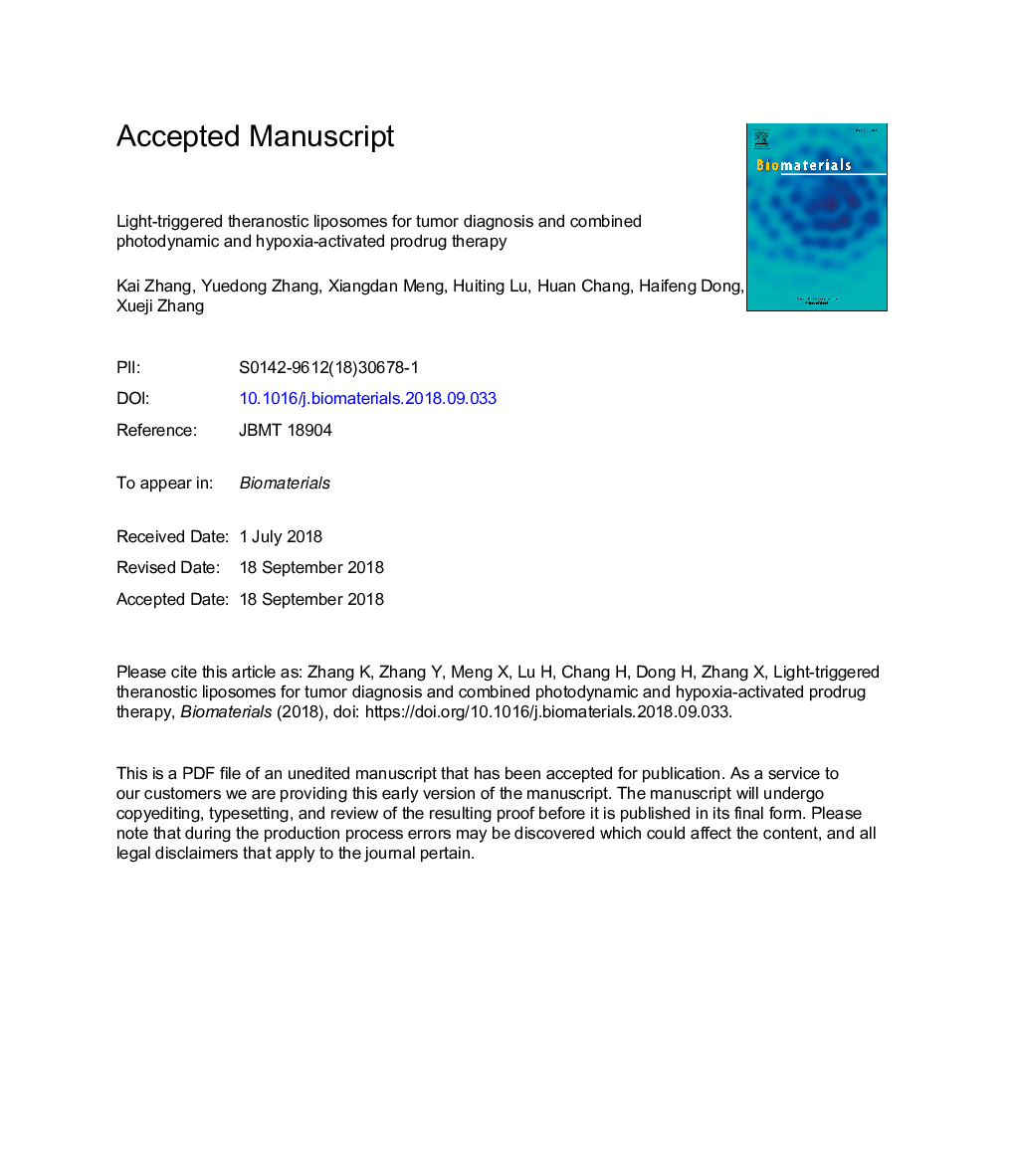| Article ID | Journal | Published Year | Pages | File Type |
|---|---|---|---|---|
| 11028458 | Biomaterials | 2018 | 24 Pages |
Abstract
Hypoxia tumor microenvironment is a major challenge for photodynamical therapy (PDT), and hypoxia-activated chemotherapy combined PDT could be promising for enhanced anticancer therapy. In this study, we report an innovative 2-nitroimidazole derivative conjugated polyethylene glycol (PEG) amphoteric polymer theranostic liposome encapsulated a photosensitizer Chlorin e6 (Ce6), hypoxia-activated prodrug Tirapazamine (TPZ) and gene probe for synergistic photodynamic-chemotherapy. Ce6-mediated PDT upon irradiation with a laser induces hypoxia, which leads to the disassembly of the liposome and activates the antitumor activity of TPZ for improved cancer cell-killing. The released co-delivered gene probe could effectively detect the oncogenic intracellular biomarker for diagnosis. Both in vitro and in vivo studies demonstrated the greatly improved anti-cancer activity compared to conventional PDT. This work contributes to the design of hypoxia-responsive multifunctional liposome for tumor diagnosis and hypoxia-activated chemotherapy combined PDT for synergetic therapy, which holds great promise for future cancer therapy.
Related Topics
Physical Sciences and Engineering
Chemical Engineering
Bioengineering
Authors
Kai Zhang, Yuedong Zhang, Xiangdan Meng, Huiting Lu, Huan Chang, Haifeng Dong, Xueji Zhang,
